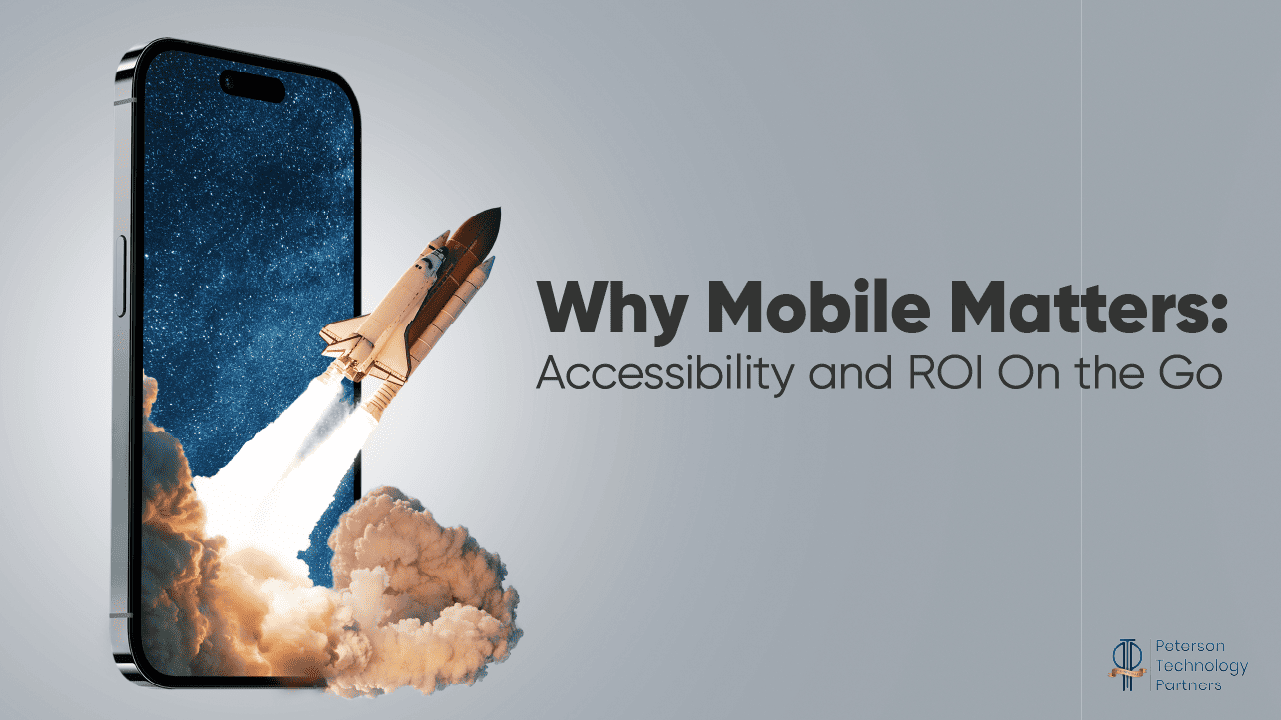A digital web presence is mandatory for any business today, whether your product and services are digital or not. But a website alone is no longer enough to build a digital brand and increase your reach.
When you combine the rise of “mobile only” Internet users (that is, users without laptops or desktops, connecting solely via their mobiles) with the often broken functionality available on many mobile websites, you get frustration on both sides — and costly frustration, at that: Per the U.S. Department of Commerce, companies without accessible websites stand to lose around $6.9 billion each year.
If you aren’t yet thinking about all of this from a liability standpoint, by the way, start; accessibility-related litigation is up over 180% in recent years. Fortunately, by focusing on key areas when creating or updating your web presence, you can avert disaster and turn your missed customer connections into long-term loyal fans.
How and why do most mobile websites fail their user base? When websites aren’t properly optimized for the mobile web, more often than not they end up leaving out all of those “mobile only” users. Currently, that’s around 2 billion people or 51% of all users – but by 2025, that proportion could skyrocket to 72%. And according to the WebAIM Million, an annual report that assesses the home pages of the world’s top 1,000,000 websites from an accessibility standpoint, the situation gets even worse when you factor in the experiences of users with disabilities: Approximately 96.3% of the million websites reviewed in 2023 had discernable Web Content Accessibility Guidelines (WCAG) failures.
Suffice it to say you can’t, and shouldn’t, sweep this problem under the rug if you want your company to survive for long. But what exactly can you do to ensure your mobile web presence comes across clearly to each and every user, just as you originally intended? Let’s explore some strategies that help close the gap.
[RELATED: Thriving Through the next Revolution: Industry 4.0]
-
Accessibility is king
Improving your website’s accessibility helps bring disconnected users back to the fold — or the checkout flow, as the case may be — thus increasing your potential future customer base. You can use automated tools to check for compatibility, at least up to a certain extent, but there’s truly no substitute for end-user feedback and testing when it comes to clarifying issues in design or functionality.
At global nonprofit Understood, an organization on a mission to change the world by supporting equity of treatment for neurodivergent individuals throughout their lives, refocusing on users and their feedback was a natural next step. Keeping this mindset throughout all phases of the design process has been their North Star of accessibility, and perfectly complements the org’s purpose. As Understood devs Catherine Houle and Ilknur Eren put it:
“…We have started putting people at the center of the process. Previously, the focus was on process, data evolution, key metrics, and results. That mindset leaves out a sizable portion of the population which diminishes access for users to all websites and apps across the board.”
You can help close the gap here by keeping this human-centric perspective in mind when designing or updating your website, and it even works when you’re reviewing facts and figures, helping you steer clear of inadvertent ableism. This is particularly true when you’re working with so-called “mobile friendly” websites, which can trip visual accessibility red flags even (and sometimes especially) when they’re aesthetically considered as “good design”.
-
Target mobile responsivity over mobile “friendliness”
What’s the problem with being friendly? Plenty.
Vague assurances of your website’s “mobile-friendliness” are no longer sufficient excuses to hand wave broken functionality by assigning blame to the user, their device, their network, or some combination of all three. When a website is said to be “mobile friendly,” in practice that can end up meaning anything — sites like this are typically intended to be scaled-down versions of the desktop site’s “full experience.” While this makes it possible for some users to view your website, chances are good that some aspects of your site’s UI and/or key functionalities won’t be operational, causing frustration and worse. When users can’t navigate your mobile website, they’re over 50% less likely to recommend you to others, and 60% more likely to go shop elsewhere.
There’s more. By treating the desktop version of your website as the “full” experience, and the mobile version as an acceptably lesser/incomplete one, you’re not only dismissing those approximately ~2 billion users who exclusively browse via their mobile devices, you’re letting them know that you’re officially okay with them missing out on your offerings. They don’t matter, their experience doesn’t matter. It was too much work. When you frame it that way, how friendly does it really sound?
[RELATED: Unconscious Bias: How It’s Affecting Your Workplace.]
What you want instead is a mobile responsive website. That means that your website gets reformatted for mobile users, which keeps UI elements in view and actually clickable, resizes pictures to look and load their best, and essentially tries to keep the experience as one-to-one as possible with what users will get if they load up the desktop site. While this requires a tad more work on your part to achieve, it’s well worth it, as cheekily-named British e-tailer Skinnydip London discovered when they selected Shopify as an out-of-the-box eCommerce solution to suit their target market of young, tech-savvy shoppers. Knowing that Shopify provides simple, clear navigation and speedy loading times (both key issues for mobile users) has paid off, with mobile orders rising by approximately 70% as a result.
-
Remember that mobile users can be anywhere in the world
What about the content assets you create for your website? If you don’t think accessibility matters there too, definitely reconsider: To use just one very common example, people with visual impairment/s may rely heavily on the use of screen readers; modern screen reader technology is itself heavily reliant on page structure, including title tags and headings, so that users can navigate the page properly. In order to keep your content clear for these and similar users, then, you’ll need to make sure you’ve got a game plan to bring clear, consistent structure to all of your site’s pages. What about a multimedia example, like this one: Should every video on your website autoplay? That would be a no – and if autoplay is an absolute must-do, make the mute and pause functions in your video embeds very apparent and clickable. Your users, and the indeterminate factors that form their immediate surroundings, will thank you.
Make sure your content asset creation workflow includes ample time to create and review closed captioning and other ‘small’ elements. While it’s sometimes possible to skip the caption creation step in lieu of the automatic captions that some services, including YouTube, provide automatically, it’s far from perfect – but do not skip the review step! Many auto-generated captions need small adjustments for typos, misunderstandings, and timing; this final layer of polish only takes a moment, but it will make a noticeable difference, especially to users who are Deaf or hard of hearing.
Take advantage of location services and embeddable elements that allow you to specifically target and serve mobile users in a way that can’t actually be replicated exactly via desktop. If it makes sense for your business to include a map for easy findability, definitely consider doing so as this also serves to improve your local SEO rankings. What better way to let mobile users know that you see and value them as customers than to give them what feels like personalized directions right to your doorstep?
Conclusion
While it’s often difficult to ensure your company’s mobile web presence is engaging, correct, up-to-date, mobile responsive, functional, and beautiful, it’s also essential to the organization’s survival. Remember, ~82% of people say they are likely to spend more with companies they see making strides to welcome users from all walks of life. Focus on the factors you can control when reviewing and updating the company’s web presence — accessibility, awareness, location — and start driving the type of value that matters most to you.





